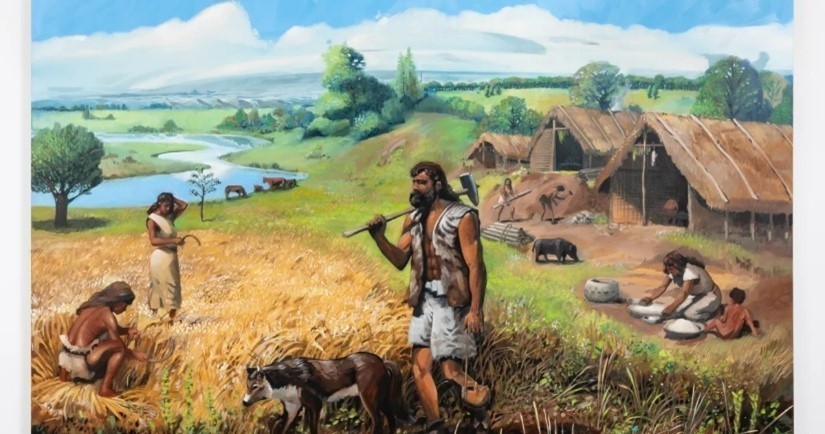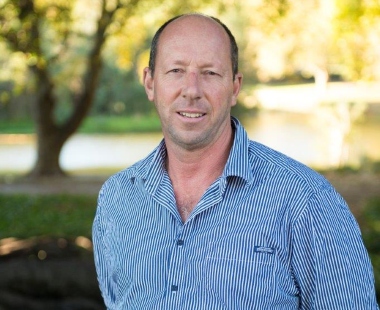It could be argued that the concept of highest and best land use dates to the advent of agriculture. Mankind’s intelligence has enabled an unprecedented ability to dominate the planet’s resources. This has resulted in an ever-increasing acceleration of development. As the various global environments continue to evolve, agriculture also needs to evolve to meet the demands of climatic changes, the development of markets and political policy and pressures. This gradually places pressure on existing land use, with change inevitable over time.
Are the stakeholders in your business positioning it to take advantage of the emerging changes along with the challenges and opportunities these present?
Have you questioned the current land uses and looked at all the options with an open mind?
Setting the scene
When nomadic man learned the extended nomadic group could settle in a fertile area with favourable climatic conditions and manipulate the environment to suit their needs, they demonstrated a higher and better use for that land. Further to that, their ability to remain in that location sustainably, essentially invented sustainable agriculture.
This is the transition from a hunting and gathering existence to settlement, and the demonstration of the earliest form of a higher and better use of land.

Fast forward to modern history and the settlement of any nation or any major region, and the fact is the most fertile land areas with the most reliable rainfall were settled first. The areas immediately surrounding the primitive settlements were promoted as vegetable gardens (sources of highly perishable goods) with areas further afield, less protected, were used for grazing and less vulnerable crops. This begins to explain the concept of higher and best use.
Even today, fresh food production is still located in closer proximity (via accessibility) to the major markets, and this land commands the highest value. Only when the value of the land for food production is surpassed by the requirement for permanent shelter is a new high value established as urban sprawl provides the addition of modern utilities and services.

In more recent times, advances in refrigeration, packing and distribution systems have allowed intensive agricultural pursuits to displace extensive agricultural industries such as dryland cropping and livestock in some geographic locations. The delivery of perishable goods to markets over vast distances has become possible with the rapid advancement of today’s specialist modern and powerful transport fleets coupled with high-speed road corridors and networks. This capacity has provided the impetus for the re-development of inland valleys and coastal areas literally thousands of kms from major markets.
There could not be a better example than the supply of highly perishable tropical fruit grown in Far-North Queensland delivered to Melbourne, Adelaide and Perth – by road – on a daily basis.
All these factors compound to put pressure on current land use everywhere.

The principle of highest and best use.
The principle of highest and best use is one of the fundamental considerations in the establishment of real estate value. The clearing of land for the purpose of use as arable acres is a primary example that is familiar to everyone today.
Highest and best use requires the consideration of not just the current use of land but any future use that may offer a further increase in value.
There are 4 fundamental tests to establish the Highest and Best Use.
Is it physically possible?
This asks the questions.
- Are the topography, soil type and conditions suitable?
- Does lot size and shape suit the development?
- Is surface and subsurface water of consideration, and
- Do weather patterns and events suit the development?
Is the use legally permitted?
Is the potential use legally permissible involves a few different legal considerations.
- Local Council zoning and permitted uses.
- State Government regulations.
- Environmental Protection Act considerations.
- Federal Government limitations – matters of National and International interest.
- Conservation orders – protected areas and species.
- Native title.
What is the likelihood of any of the above changing. Is there substantial evidence establishing the permitted use will change.
Would the use be financially viable?
To address whether a proposed use is financially feasible, you need to:
- Forecast construction and development expenses.
- Develop cashflow estimates.
- Use discounted cashflow techniques to confirm the present value of the capital required to apply the changed land use. This is more relevant when comprehensive infra-structure adjustments are required.
- E.g. development of irrigation, construction of green-houses, trellis orchards, etc.
- Consider the comparison of the property’s revised return against the present rate of return.
Only the proposed property uses that meet these criteria for being financially feasible move to the next step of the analysis.
Is the proposed use maximally productive?
This fourth step takes all the proposed uses that meet these requirements and ranks them in order of nett return. While ranking proposed uses, it is also helpful to consider the risk associated with the proposed use. This means one use might generate a much higher internal rate of return than other uses. Yet, the reason for the high return may be related to the higher risk of that option. One way to adjust for the risk associated with a proposed use is to apply a discount rate that is commensurate with the level of risk.
In broadacre farming, this final point is considered annually as part of the cropping rotation.
E.g. If you lived in a high frost risk area – potential yield is discounted by the likely frost impact providing a discounted result. Similarly, if you lived in a marginal / low rainfall zone, growing canola offers an increased risk of poor yield results.
The level of discount applied is commensurate with the probability of the adverse event and your willingness to accept the risk to use that option.
Challenge your thinking.
From time-to-time the stakeholders of any land ownership business should consider if the annual programmes and strategic direction of the business are reflective of the evolution of land use, agriculture and the foreseeable market demands.
Land use pressure for a higher and better use isn’t restricted to high valued land. Marginal land types also need to be considered.
Recent history shows the redeployment of marginal lands for other legal use – such as the generation of renewable energy. There are numerous examples across Australia (and indeed the world) where large tracts of inexpensive land have been re-developed to establish areas for a greater and better good, such as vast arrays of solar panels in Solar Farms.
This is a picture of the Nyngan solar farm, NSW. In 1997, I was working in transport as a sub-contractor carting grain from these paddocks on this farm to GrainCorp.
The owner of the farm was 35-40 years older than me. He couldn’t see the future in farming in the Nyngan area. There had been a series of drought years and money was tight. His grandson (10-15 years younger than me), on the other hand was a bit more visionary. He talked about the possibility of thousands of solar panels across the farm. All I could see was thousands of hectares of Prickly Saltwort (or tumbleweed) surrounding low yielding crops.

Today this facility covers 460 ha with 250 ha under solar panels, representing an investment by Tilt Renewables of approximately $300M and generates up to 102 MW of renewable electricity, sufficient to power 32,000 homes.
Australia (including Western Australia) has enormous areas of land zoned as agricultural that is marginal for economical agricultural pursuits. There is also considerable evidence some of the Western Australian wheat-belt is in a drying climatic zone.
Does some of this land offer an opportunity to provide energy solutions? In the International Renewable Energy space, Australia is considered to have a super-power, and that super-power is the generation of renewable energy from wind and solar.
This is not to suggest the entire Wheat-belt should suddenly sellout to the Renewable Corporations, retire, and go fishing. Far from it. What it is suggesting, is land that is presently being used for the purpose of marginal economic reward (be that return on patient capital or marginal return on annual cash exposure) needs to be reconsidered for land use change.
Next steps.
At a land value level, the consideration of agricultural land is uncleared vs cleared, unfenced vs fenced, non-grazing vs grazing vs arable, dryland vs irrigated, with each step adding market value. The increase in value of each step representing the ‘Sunk Capital’ for the transformation of that land to the next step of development.
At a business level, the equation is more related to enterprise choice. However, this is not as much about land-development, but utilisation of land for the most profitable enterprise.
Consider land areas of the farm that are not part of core business operations, that is, land that is not contributing significantly to acceptable revenue generation and/or risk mitigation.
- Do any of these areas suit an alternate land use?
- Is your enterprise selection for this land the most profitable?
- Are any of these areas suitable for reforestation?
- Are there water catchments that could developed to combat drying climatic conditions?
- Are these areas near current power supply and do they suit the establishment of on-farm solar generation for self-use?
Why? Because staying in-front of a foreseeable change is to be better prepared.
Over the next 5 -10 years, Western Australian farmers are likely to face enterprise choice decisions.
- International conflicts that have significant market impacts have no immediate or obvious solutions. Input pricing and export costs dependent on fossil fuel supply and market forces are likely to remain elevated.
- The voting populous becomes increasingly prone to the influence of an urban based younger generations inevitably moving Government policy towards urban influence. Remember, their food comes off supermarket shelves and is the driving demand for the continued development of the high-speed supply chain discussed earlier.
- International pressure for change in fossil fuel use; and
- The continued long-term trend towards a drying climate.
It’s easy to remain a sceptic – but will you look back and regret not taking advantage of a ‘higher and better land use?

